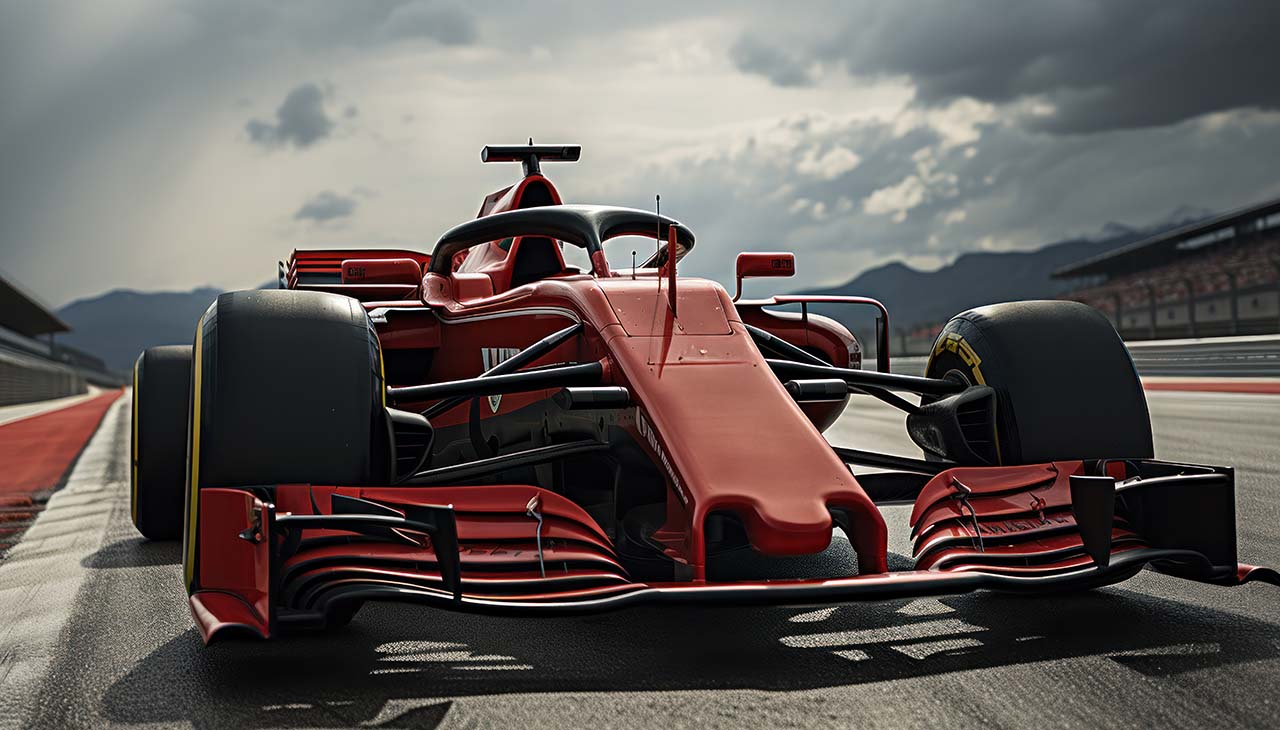The engineering behind racing vehicles is a symphony of advanced technology, materials science, and aerodynamics, orchestrated with one goal in mind: speed. Racing vehicles, whether they’re tearing up the asphalt on Formula One circuits or charging through off-road terrains in rally competitions, are marvels of modern engineering. These machines are the product of relentless innovation, where every component is optimized for performance, safety, and efficiency. This document explores the cutting-edge technologies and engineering principles that propel these vehicles to their limits, offering a glimpse into the world of high-speed motorsports through the lens of engineering excellence.
Aerodynamics
Aerodynamics plays a pivotal role in the design and performance of racing vehicles, influencing how air interacts with the vehicle’s surfaces at high speeds. Racing teams meticulously shape their vehicles to minimize air resistance (drag) and maximize downforce, which presses the car closer to the track for enhanced traction. Examples of aerodynamic features include front and rear wings, diffusers, and the sleek, streamlined body shapes designed to cut through the air more efficiently. These features significantly impact performance by reducing drag, increasing speed, and improving stability and handling, allowing drivers to maneuver more aggressively and maintain higher speeds through corners. The pursuit of superior aerodynamics has led to innovations such as active aerodynamics, where parts of the car’s body adjust in real-time to optimize performance according to the dynamics of motion.
Powertrain
The powertrain in a racing vehicle is a complex amalgamation engineered for maximum power output and efficiency. Engine design is central to this, with teams constantly pushing the boundaries in materials and technologies to squeeze out every last drop of horsepower. High-performance engines used in racing are typically lightweight, use advanced materials to withstand extreme conditions, and have highly efficient combustion mechanisms. These engines are optimized for high RPMs and are designed to deliver power more instantly and reliably than standard engines.
Transmission systems in racing vehicles are equally sophisticated, designed to handle the immense power and torque produced by the racing engines. They are engineered for quick, seamless gear shifts, allowing drivers to maintain speed and momentum. Advanced dual-clutch transmission systems, sequential gearboxes, and constantly variable transmission (CVT) designs are common in the racing world, each offering advantages in speed, efficiency, and control.
Hybrid technology has also made its mark in racing, combining traditional internal combustion engines with electric power to boost performance while reducing emissions. This technology not only contributes to a surge in power when needed, such as during acceleration or overtaking but also enhances fuel efficiency, a critical factor in endurance racing. Hybrid systems in racing have evolved, showcasing innovations such as energy recovery systems, which capture energy usually lost during braking and convert it into additional power, providing teams with a strategic advantage.
Chassis and Suspension
The chassis and suspension systems in racing vehicles are fundamental for vehicle stability and handling, critical factors that influence a car’s performance on the track. The chassis serves as the vehicle’s backbone, providing the structural framework to which all other components are attached. In racing, the chassis must not only be rigid to ensure safety and stability at high speeds but also lightweight to enhance performance. Advanced materials such as carbon fiber, titanium, and lightweight alloys are extensively used in chassis construction to strike the perfect balance between strength and weight.
Suspension systems play a pivotal role in managing the vehicle’s dynamics, ensuring that the tires maintain optimal contact with the road surface under varying conditions. In racing, suspension systems are highly sophisticated, allowing for adjustments in real-time to suit the track’s characteristics and changing conditions. This includes tuning the balance between stiffness for handling precision and flexibility to absorb bumps and maintain traction. Innovative materials and technologies, such as active suspension and adaptive damping systems, are employed to adapt to the rigors of the race, offering drivers enhanced control and responsiveness.
These engineering choices in chassis and suspension design are critical, they directly impact the vehicle’s agility, how it responds to driver inputs, and its ability to withstand the stresses of high-speed racing.
Safety Innovations
Safety innovations in racing vehicles have seen dramatic advancements over the years, significantly enhancing driver protection and shaping the development of safety regulations. The incorporation of cutting-edge safety technology into racing design is paramount, aiming to minimize risks in a sport where high speeds and close quarters are the norms. Driver protection systems, such as the HANS (Head and Neck Support) device, have become mandatory in many forms of racing, drastically reducing the risk of neck injuries and fatalities by stabilizing the head during a crash.
Crash testing in motorsports has evolved into a rigorous science, with racing vehicles undergoing extensive testing to meet stringent safety standards. These tests simulate various high-impact scenarios to ensure the integrity of the vehicle’s safety cell, the effectiveness of crash absorption zones, and the robustness of safety equipment such as belts and harnesses. Safety regulations, enforced by governing bodies like the FIA (Fédération Internationale de l’Automobile), continuously adapt to incorporate the latest technological advancements and lessons learned from accidents. These regulations mandate not only the inclusion of safety features but also the construction methods and materials used in racing vehicles, ensuring they provide maximum protection for the driver. The interplay between innovative safety technologies, rigorous crash testing, and comprehensive regulations has undeniably made motorsports safer, allowing drivers to compete with confidence at the edge of physics.
Data Analysis and Telemetry
Data analysis and telemetry have become instrumental in modern racing, revolutionizing how teams optimize vehicle performance and strategy. Telemetry systems in racing vehicles collect a vast array of data in real-time, from engine performance parameters to tire pressure and temperature, providing a comprehensive view of the car’s behavior under various conditions. This data is transmitted instantaneously to the team engineers, who analyze it to make crucial decisions on the fly. By monitoring the vehicle’s performance in real time, teams can identify areas for improvement, adjust strategies to match race conditions, and make immediate adjustments to the car’s settings. This could include changes to fuel strategy, aerodynamics, or even instructing drivers to alter their racing lines or driving styles. The ability to leverage data effectively can mean the difference between winning and losing, highlighting the critical role of telemetry systems in achieving peak performance in the competitive world of racing.

